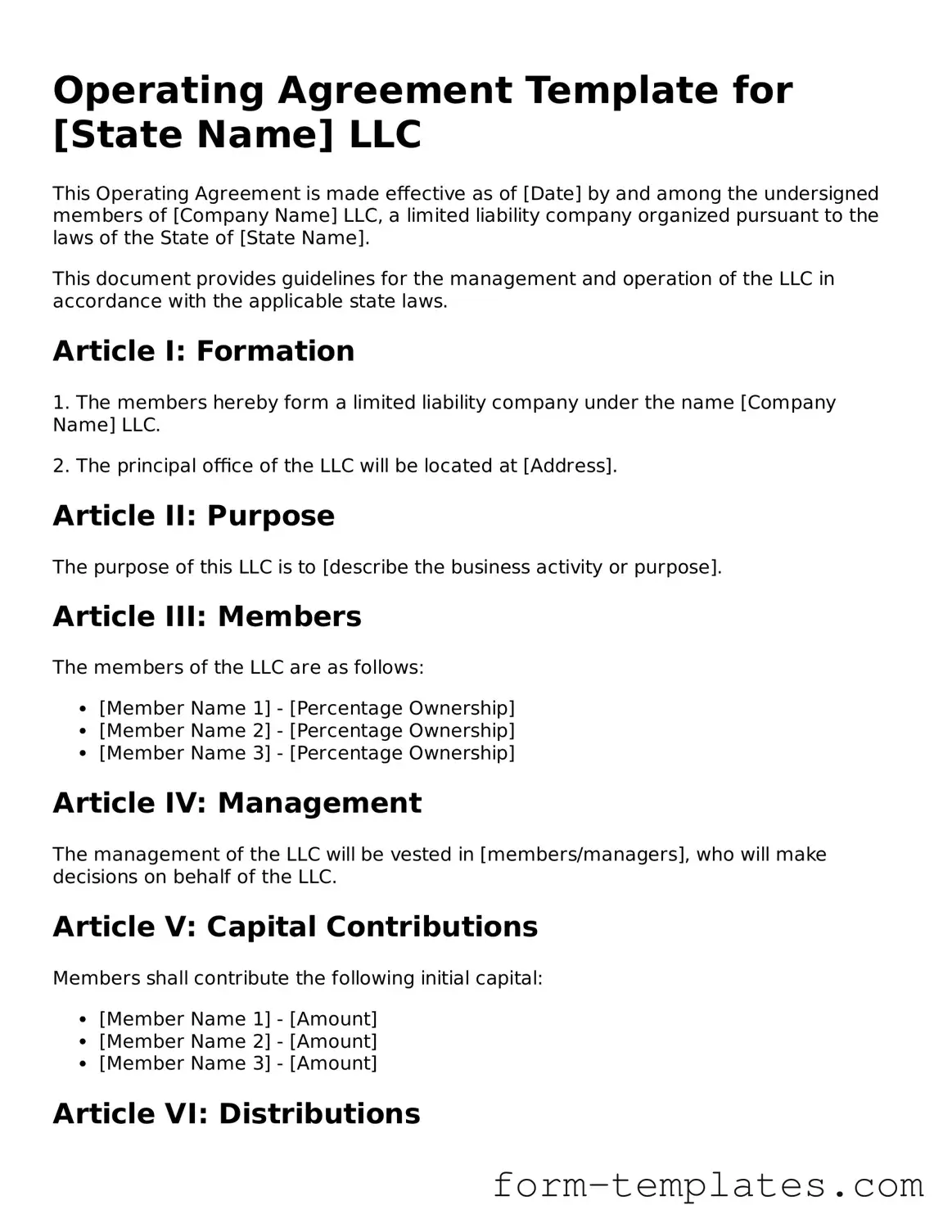Operating Agreement Template for [State Name] LLC
This Operating Agreement is made effective as of [Date] by and among the undersigned members of [Company Name] LLC, a limited liability company organized pursuant to the laws of the State of [State Name].
This document provides guidelines for the management and operation of the LLC in accordance with the applicable state laws.
Article I: Formation
1. The members hereby form a limited liability company under the name [Company Name] LLC.
2. The principal office of the LLC will be located at [Address].
Article II: Purpose
The purpose of this LLC is to [describe the business activity or purpose].
Article III: Members
The members of the LLC are as follows:
- [Member Name 1] - [Percentage Ownership]
- [Member Name 2] - [Percentage Ownership]
- [Member Name 3] - [Percentage Ownership]
Article IV: Management
The management of the LLC will be vested in [members/managers], who will make decisions on behalf of the LLC.
Article V: Capital Contributions
Members shall contribute the following initial capital:
- [Member Name 1] - [Amount]
- [Member Name 2] - [Amount]
- [Member Name 3] - [Amount]
Article VI: Distributions
Distributions of profits and losses shall be allocated in proportion to each member's percentage of ownership.
Article VII: Meetings
Members shall hold meetings [annually/quarterly/as needed] at a time and place agreed upon by the members.
Article VIII: Amendment
This Operating Agreement may be amended only by a written agreement signed by all members.
Article IX: Governing Law
This Agreement will be governed by the laws of the State of [State Name].
IN WITNESS WHEREOF, the members have executed this Operating Agreement as of the date first above written.
_________________________
[Member Name 1], Member
_________________________
[Member Name 2], Member
_________________________
[Member Name 3], Member
